Shelley Ross says the safety and operational benefits of this technology make it a must for any category of aircraft
FlyDoc25, traffic is C182 ABC, in your 2 o’clock 4 miles, 6 thousand feet, also inbound Tennant Creek, estimate zero five.’
The enormous safety benefits of being seen by ATC and other aircraft far outweigh any cost considerations.
Well, I’m being seen and talked about – how nice is that to hear! I can now respond to Brisbane Centre (and consequently, to FlyDoc25) with my current position, height and intentions. So much for thinking I was out here all alone.
I’ve learnt so much about ADS-B (Automatic Dependent Surveillance – Broadcast) in the past week that I didn’t know I even wanted to know, that I could write 10 pages on the rules, carriage requirements, options, equipment choices and caveats on ADS-B, but I’d lose you all by the third paragraph and you’d be begging me to give it a rest and take you outback like usual.
So, while we’ll touch on the technology here, I urge you to go seek out CASA’s excellent Advisory Circular AC 91-23. There lie the answers to all those questions brewing in your head, particularly if you’re sitting on the fence as an aircraft owner wondering, ‘Is it worth it or not?’
Can I just say – routine ADS-B users will shout from the rooftops at you to get off that fence. It’s that good.
With the huge increase in coverage that ADS-B has offered beyond traditional radar coverage, particularly in remote parts of central Australia, this relatively new technology has won a legion of fans. Initially mandated for IFR operations only, a growing number of VFR pilots are electing to have the technology added to their kit, acknowledging that the enormous safety benefits of being seen by ATC and other aircraft far outweigh any cost considerations.
How does ADS-B work?
Once properly installed, configured and activated, ADS-B OUT transmits (twice a second) an aircraft’s ID, position, altitude, velocity and rate of descent or climb, to ground stations without any external command or actions.
The system depends on equipment, including GPS, onboard an aircraft for this information. The data is transmitted to an ADS-B ground station and then via a communications link to the air traffic control centre. The transmissions are also picked up by other aircraft which have ADS-B IN capability, alerting their pilots to any potential risk of conflict.
This direct aircraft-to-aircraft sharing of position information, without having ATC in the loop, is the ideal way for VFR aircraft to signal their presence to other aircraft.
Which equipment do I buy?
ADS-B expert Andrew Andersen, General Aviation Advisory Network chair, veteran IFR pilot and aircraft owner says: ‘What you buy and have installed is dependent on what type of flying you do. If you are considering installing certified ADS-B in anything, whether it be recreational, experimental, RAAus or GA, the first place to go is a reputable avionics LAME who can advise you on what you need and can then ideally both sell and install the equipment for you.
‘ADS-B transmissions are sent through the aircraft’s Mode S transponder. Nearly all Mode S transponders now on the GA market can transmit ADS-B. Some of them can also incorporate inbuilt GPS. And those units are effectively self-contained, so you buy a GTX335 or GTX345, say, from Garmin, with inbuilt GPS.
‘The LAME installs it in the aircraft and it has a panel on the front like every other transponder does, but it uses its own GPS to determine the position of your aircraft. It sends all that info to ATC in accordance with the spec. There’s no need to interconnect that transponder with anything else in the aircraft unless the owner wants to.’
On the other hand, if the aircraft is well equipped and going to be flown IFR, then it’s going to need a performance-based navigation capable system (GNSS) which is going to be certified to a relevant standard. Those navigators, in addition to being good at navigating the aircraft, including the capability of flying RNAV approaches, can also be connected to a Mode S ADS-B capable transponder, and used as the information source for that transponder to send ADS-B data to ATC, without the transponder having a GPS.
‘But let’s talk about how it works if I don’t want to have certified equipment,’ Andersen says. ‘There are legal issues with installing a transponder that isn’t certified, but it is legal to utilise a low-cost ADS-B device called an electronic conspicuity (EC) device. Among several non-certified choices, the EC device we hear talked about is the SkyEcho2.
Loneliness over the Simpson Desert is a very temporary thing now. Happy days.
‘You can use an EC device in a non-certified aircraft, and the EC device itself is not certified. That sends ADS-B info with a message contained inside it [a flag] that says it is coming from an uncertified transmitter. It is not as trustworthy as the information coming from a fully aviation certified transmitter, so this information is not used by ATC to provide separation.’
Coverage
The diagram that hit home to me recently showed the coverage of radar across Australia at various altitudes, compared with the far superior coverage that ADS-B offers. OK, like radar, the coverage of ADS-B improves with aircraft altitude as the transmissions are line-of-sight but, even down at 5,000 feet, it’s a hell of an improvement on the traditional radar coverage we’ve become used to. Loneliness over the Simpson Desert is a very temporary thing now. Happy days.
Happy days also for the potential of being granted a Flight Following service. For example, there’s an ADS-B station at Ayers Rock, so if you’re inbound to YAYE at A095 or whatever, ATC is going to see you long before those Class E steps. Workload permitting, ATC will be able to provide you that service.
ATC computers use a system of priorities and while the aircraft is in radar coverage and getting good radar returns, it’ll use radar. When the aircraft leaves radar coverage and flies into ADSB coverage, ATC uses the ADSB information.
‘We really should be encouraging all our pilots, not just GA and recreational, but the airlines as well, to use ADS-B IN,’ Andersen says. ‘They don’t at the moment – they rely on TCAS [traffic collision avoidance system] which is a different technology and, unfortunately, TCAS doesn’t receive info from those EC devices like the SkyEcho2 as we’ve talked about. We should always be encouraging GA pilots to use ADS-B IN if they possibly can.’
Testimonials
Lyn Gray, Head of Operations, Fly Oz Flight Training School, Cowra
I’m totally in favour of ADS-B. As Head of Operations, I want to know where all my pilots are! I don’t like to go home until I see for myself they are safe. How’s that nav going for my newbie? Where are my night flyers? I can open up a program on my iPad like Flight Radar 24 (which uses ADS-B information) and immediately see ‘OK, they’re only 10 minutes away. Great!’ That knowledge is so reassuring.
And they’re all happy about it too. If the weather is horrid where I see any of my pilots, I can suggest half an hour on the ground somewhere nearby to wait out the next band of weather. I’m giving them some information they can really use.
Even with VFR aircraft that have ADS-B installed, ATC can give you them as specific traffic, so instead of saying ‘Unidentified VFR aircraft’, they are now able to call them ‘ABC’ – and ABC can then respond with their current position, height and intentions.
If I’m planning an IFR approach, ADS-B gives me a far more accurate position fix on other traffic. I can much more easily choose what I need to do to fit my approach in safely. I can see, for example, a Rex plane coming in and I think ‘Ok, if I slow down, drop gear and flap, I can easily fit in behind her’ and it all works out.
For our VFR aircraft that don’t have it built in, we’ve bought SkyEcho devices. You either fully charge them up at home or plug them in to the cigarette lighter in the aircraft, suction them onto the window and they provide the ADS-B OUT capability. We have one in our Arrow, which we take to Canberra a lot for our commercial training. With the rebate being offered by the Australian Government, we’re going to use that to buy a couple more, so all our planes have one. Anyone can plug one in. An RA plane can plug one in. Technology is a wonderful thing – 21st century – let’s use it. It’s there to keep us safe.
Tony Moore, Grade 1 Instructor, Central Coast Aero Club
I only have positive things to say about how this has impacted on my working life. In terms of handling IFR traffic OCTA, I’ve noticed a reduction in radio workload. There is much less pilot-to-pilot communication, like there was in the old days where you both ‘agreed’ on a course of action to maintain separation. It is much more likely these days to have Centre in the one interaction inform you of traffic and a suggested course of action to resolve any potential conflict. The other party in this scenario rarely has to make a response as they are fully aware from Centre using their callsign that there is no conflict.
ADS-B has brought improvements in safety to VFR operations also. How many times have you been blissfully cruising along in your own little world when unexpectedly Centre calls you directly to inform you of traffic or perhaps the proximity of approaching airspace. Kind of hard to ignore!
Scary how often that ‘ traffic in your 2 o’clock at 3 miles’ is never actually sighted! Of course all of this only works if everyone is on the correct frequency.
Kate Porges, IFR Mooney pilot regularly flying between regional NSW centres in all types of weather.
For me, having that reassuring feeling that you’re being seen by ATC and other aircraft makes ADS-B a no-brainer for safety. If the capability wasn’t installed in the Mooney when I bought it, I wouldn’t have hesitated to get that done. It has lifted traffic awareness to another level entirely.
| Rebate program
Grants of up to $5,000 are available to increase the uptake of ADS‑B equipment in Australian–registered aircraft. |

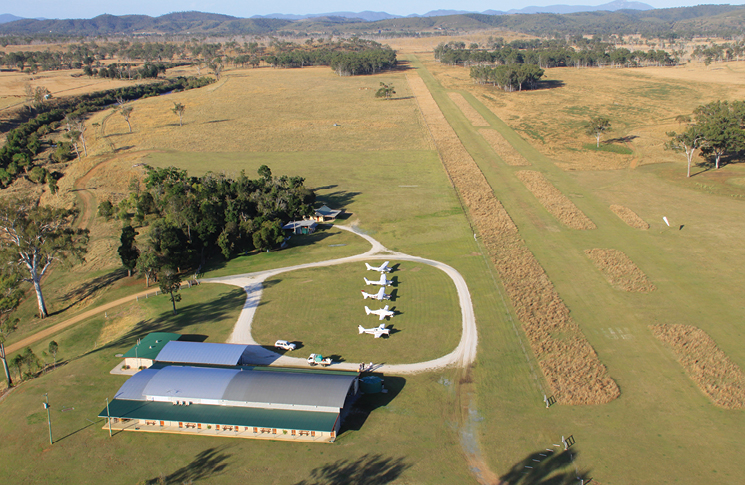
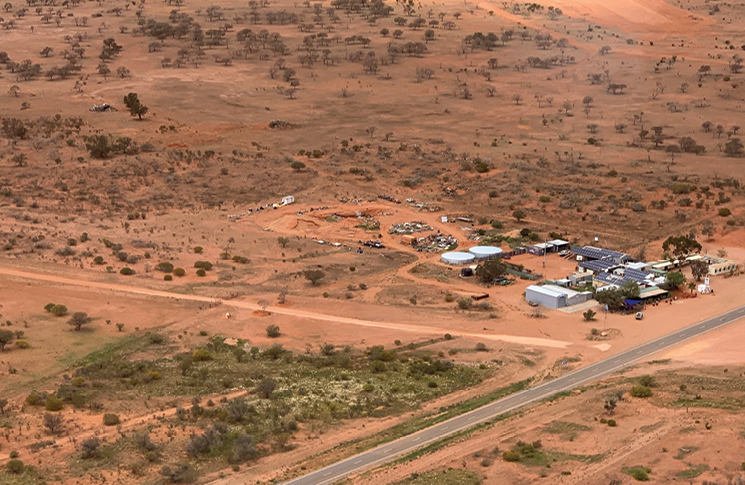
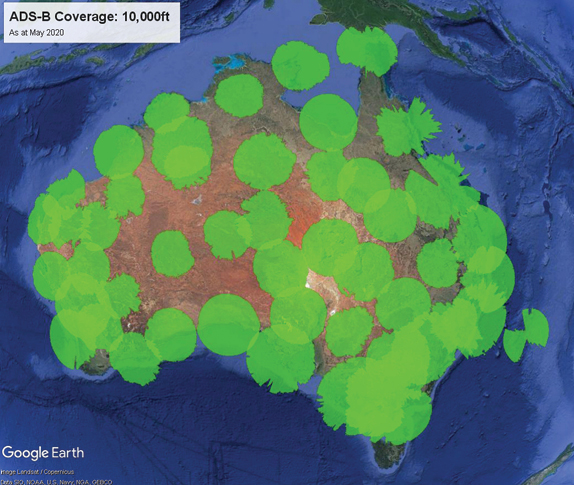
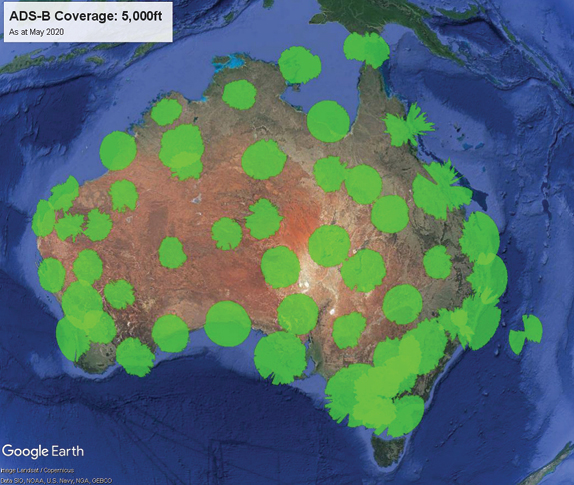
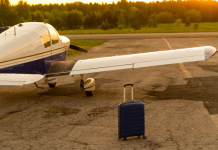



Comments are closed.